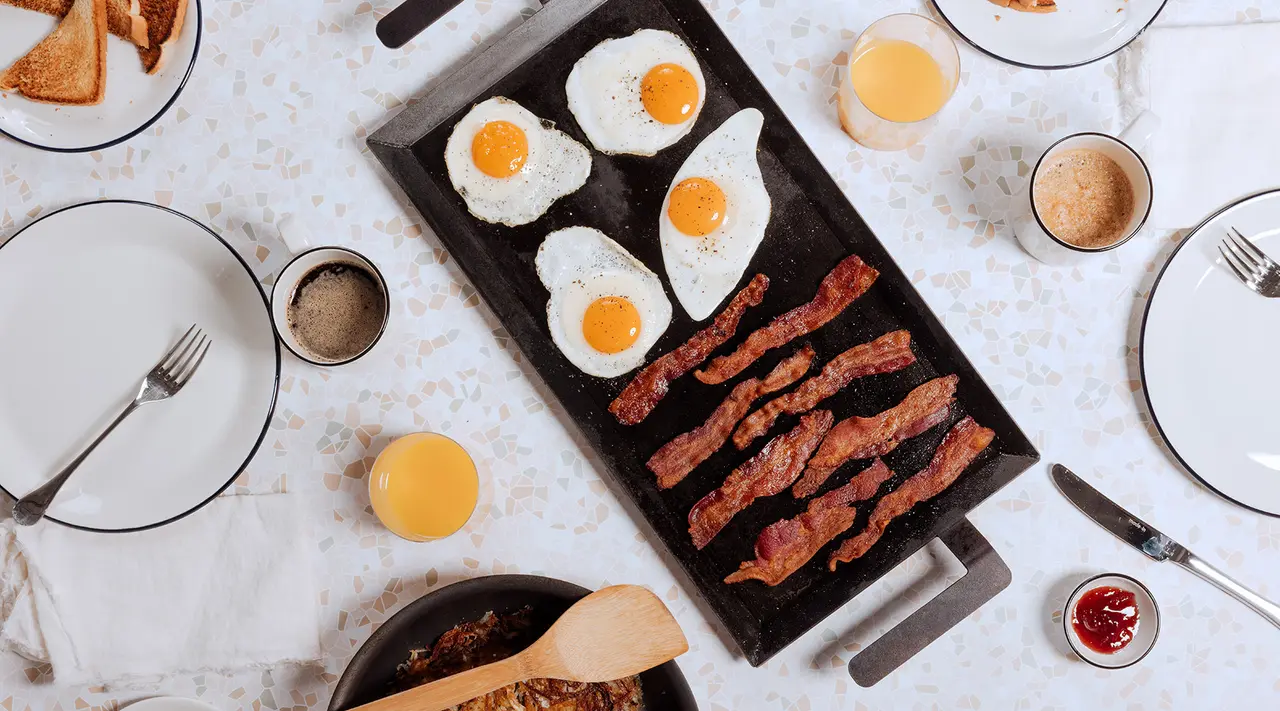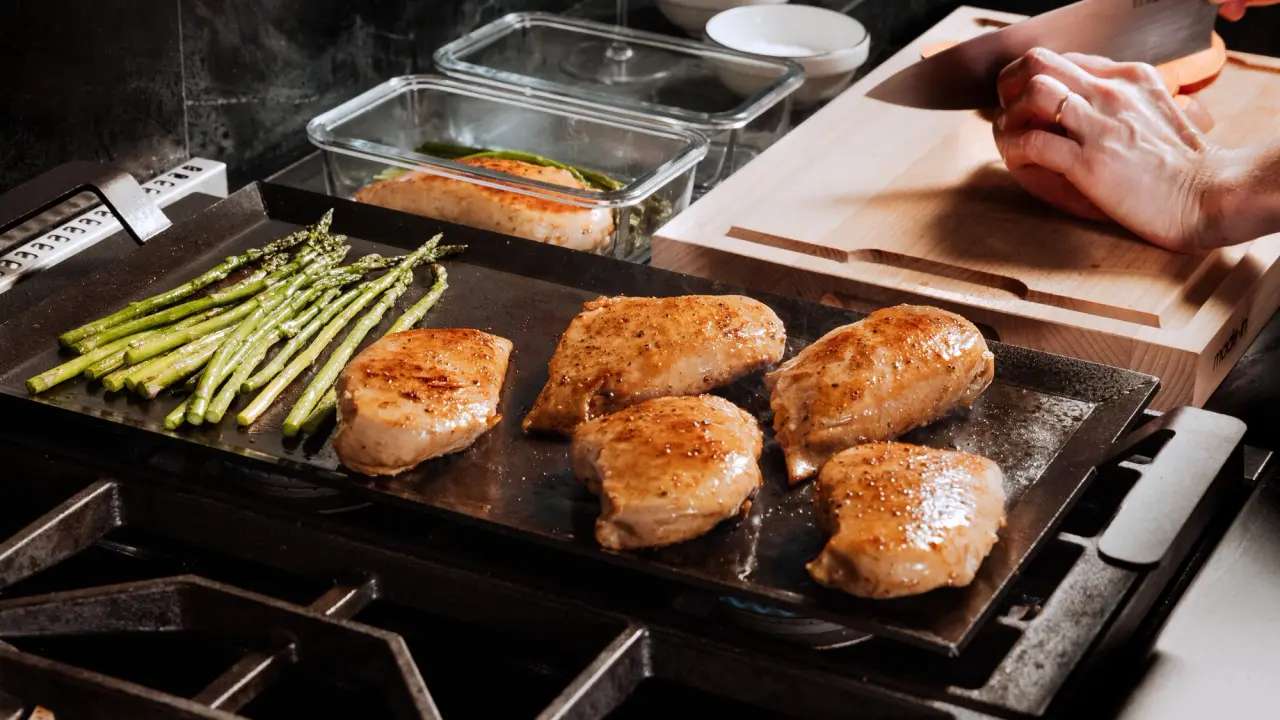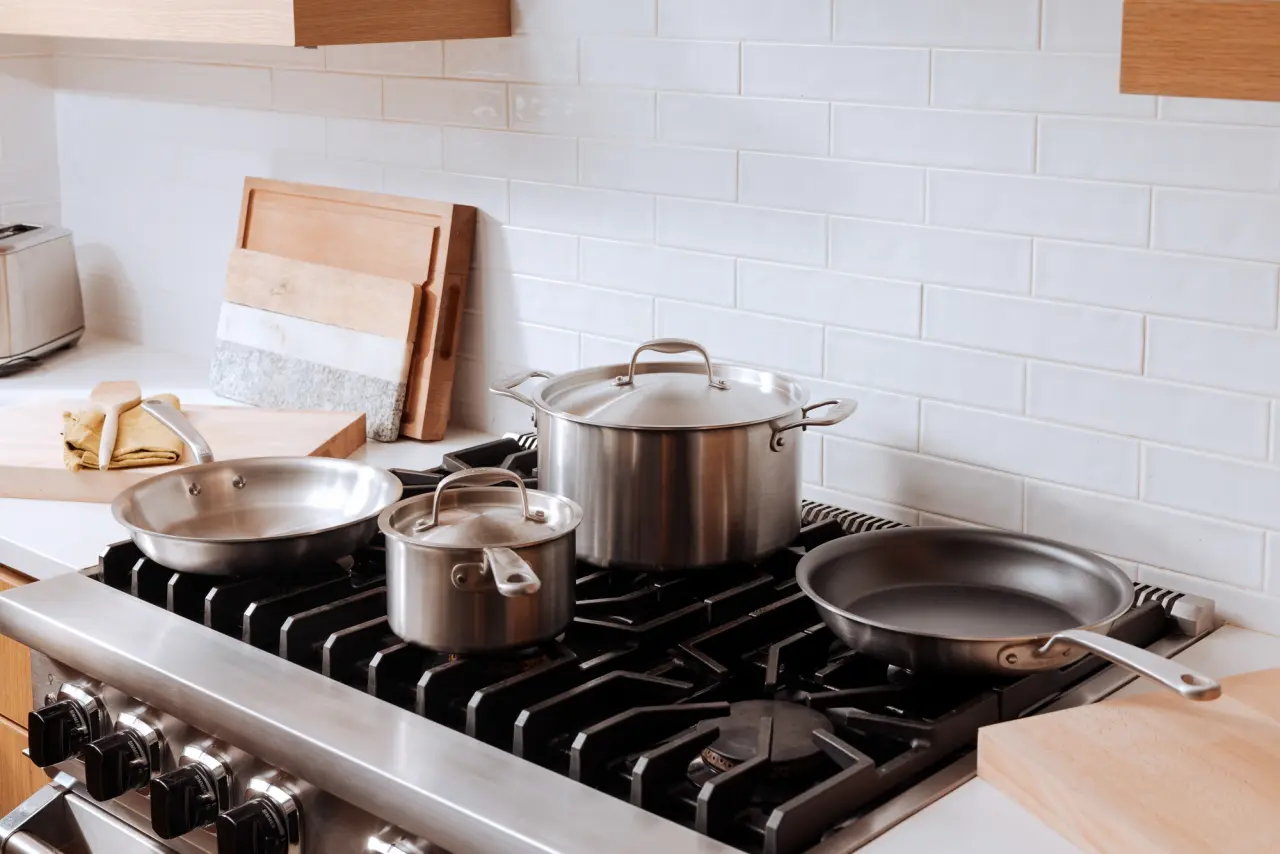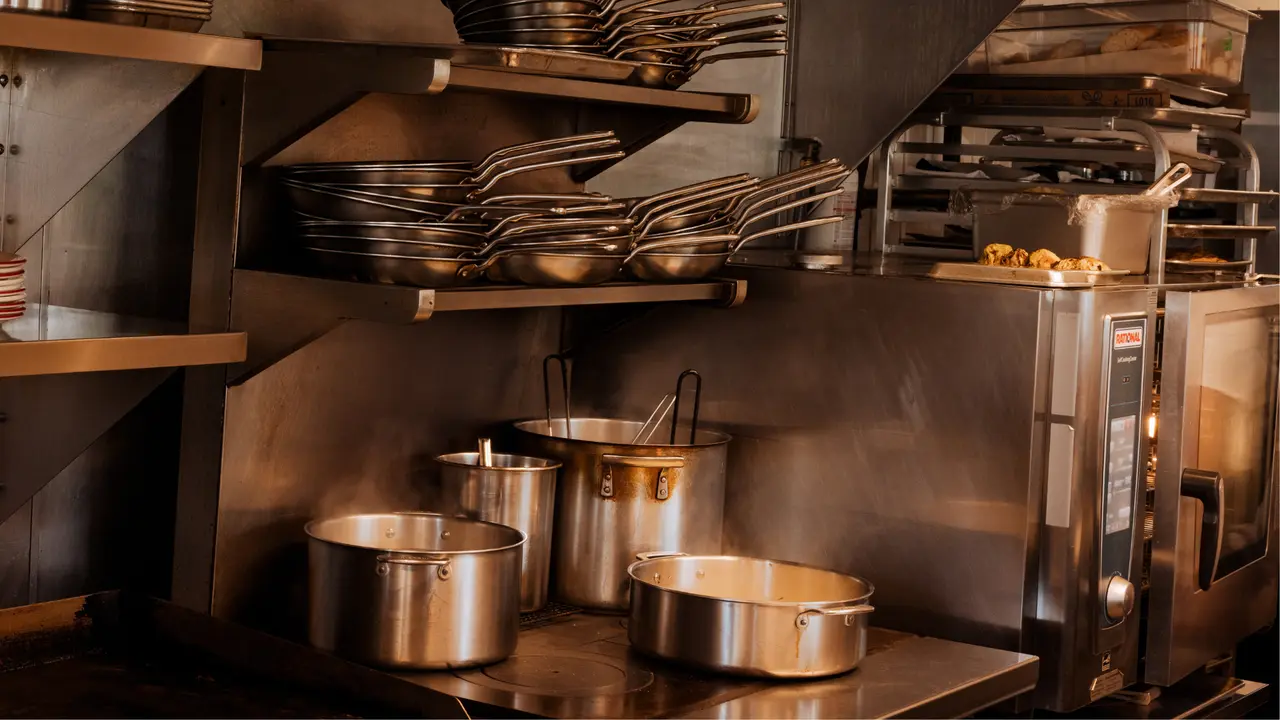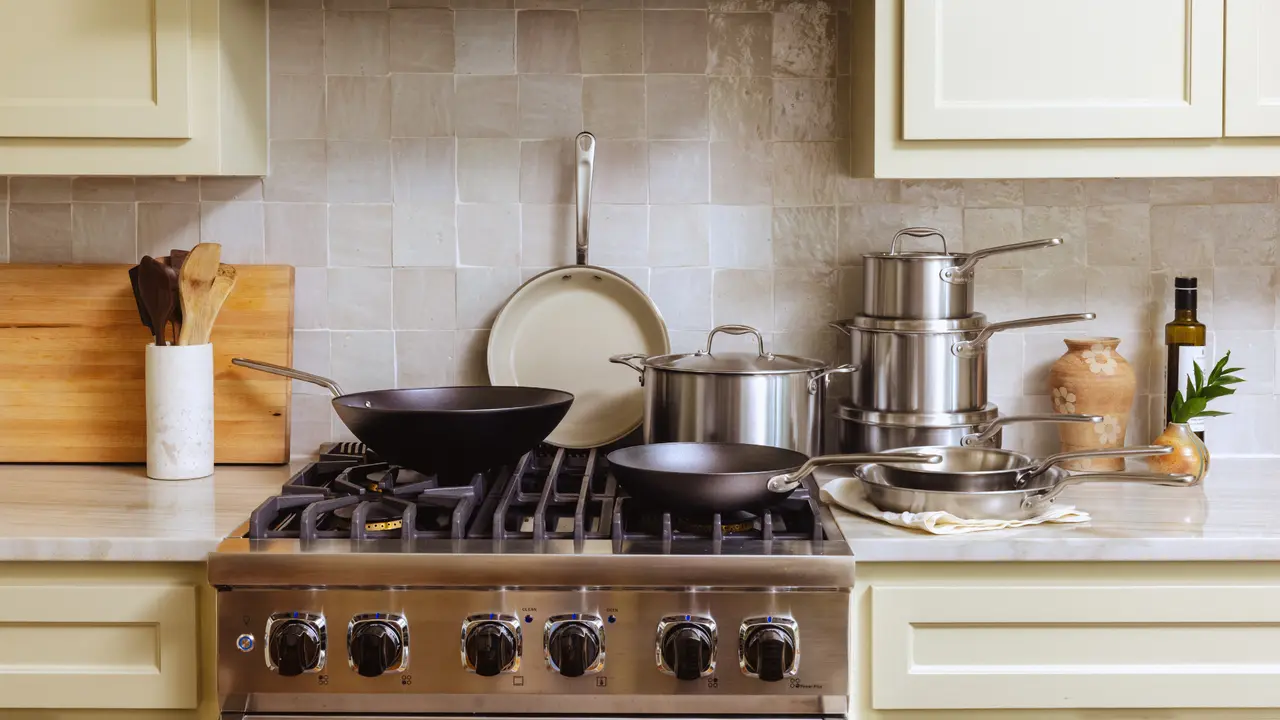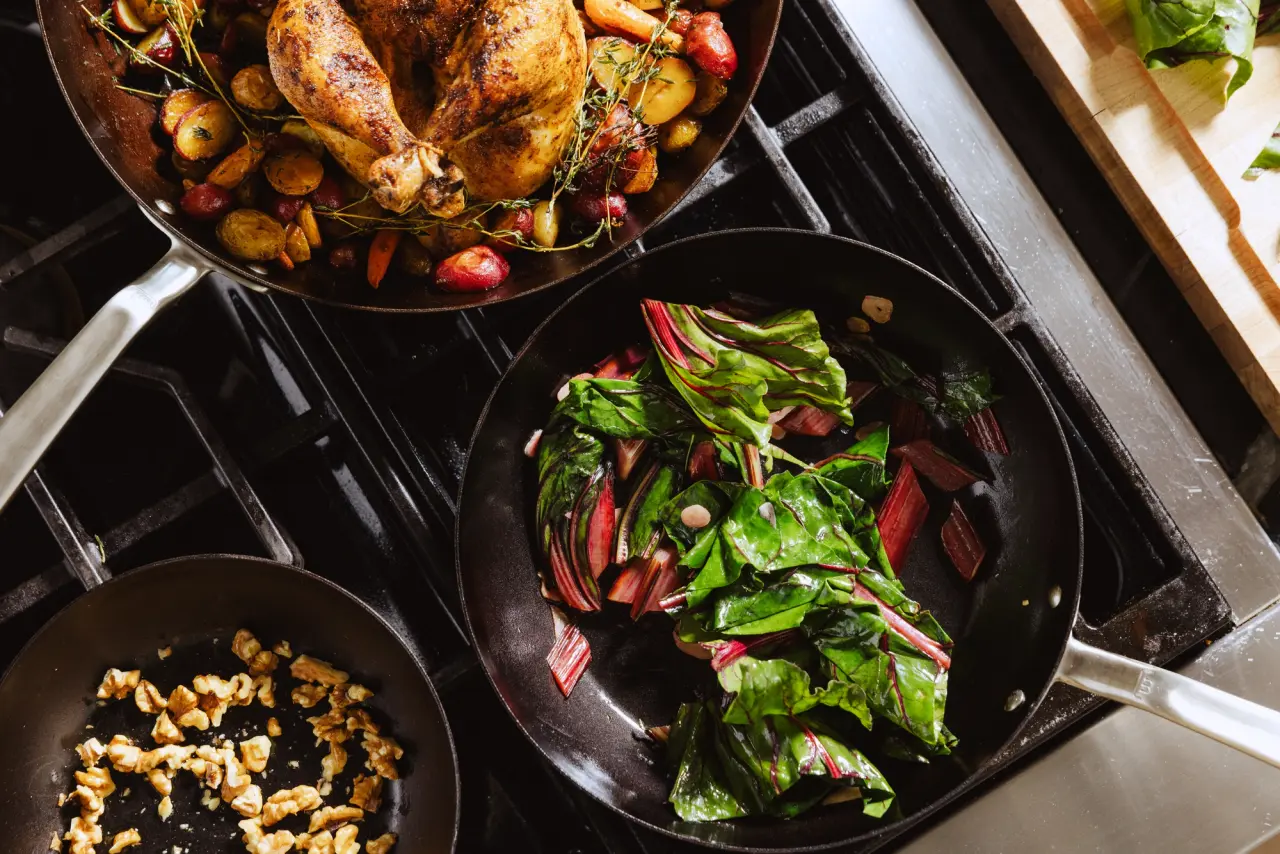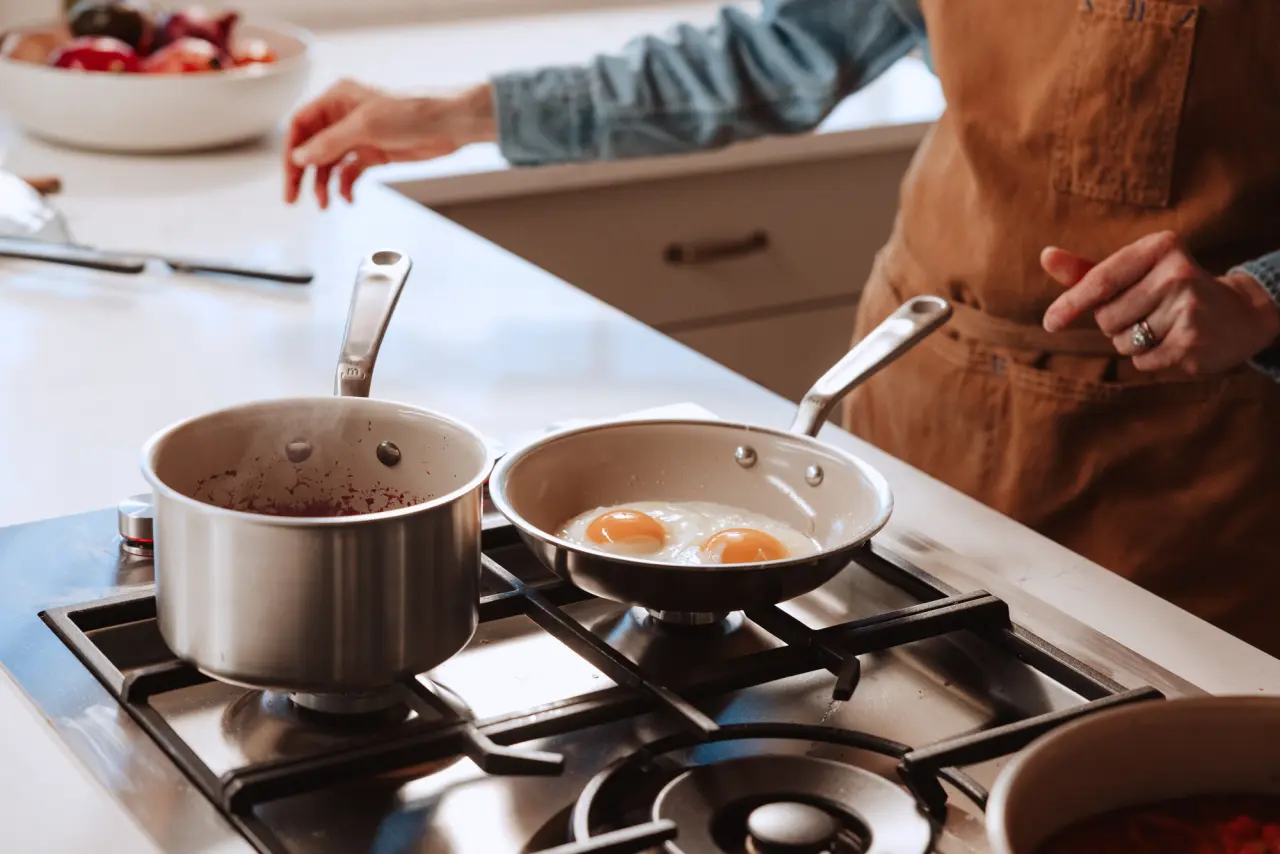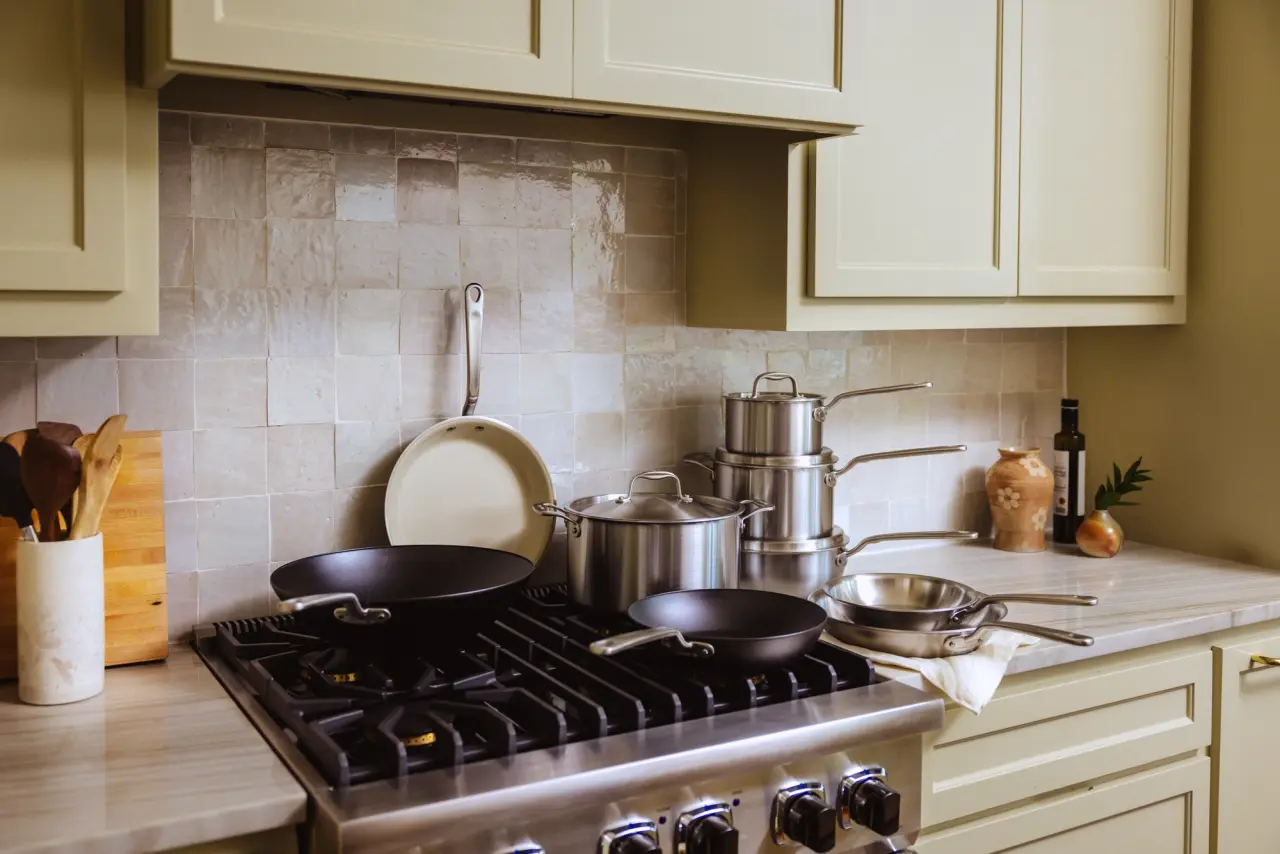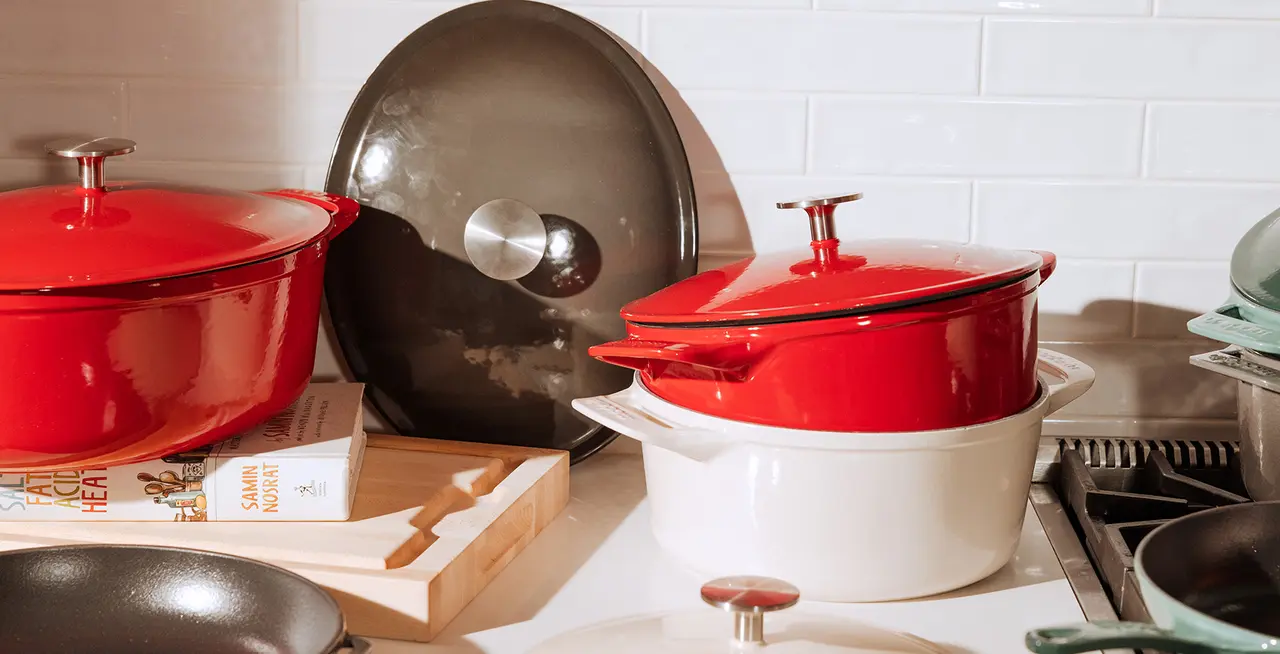Speed and safety aside, induction stovetops require a bit more thought when it comes to finding compatible cookware. Luckily, if you're in the market for an induction-compatible stovetop griddle, you're in luck. Most griddles are made of a ferromagnetic material—i.e. metals capable of heating up via magnetic field—such as carbon steel, cast iron, and stainless steel.
Yet even if your griddle seems to be made from induction-compatible materials, there’s still no guarantee that it’ll work on an induction stove. Here’s how to find out if your griddle—or other cookware, for that matter—is induction-optimized.
Are Griddles Induction Compatible?
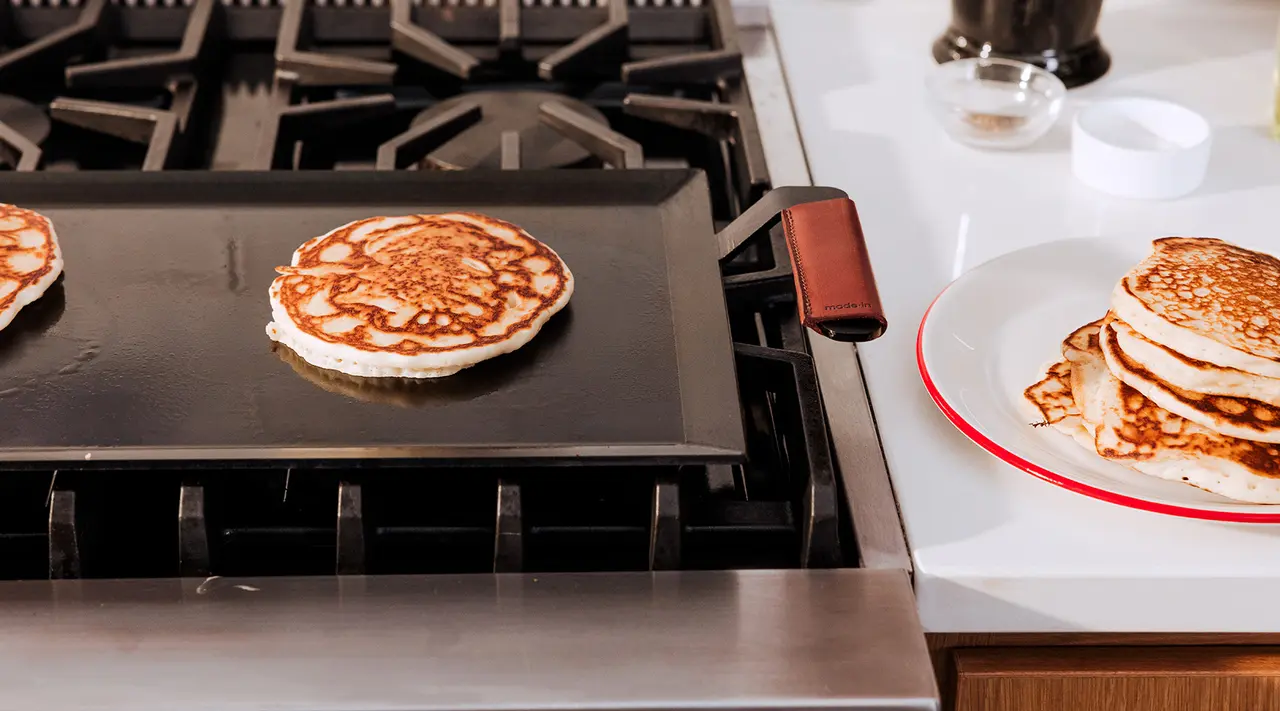
Short answer: usually, but it depends.
Long answer: yes, griddles made from induction compatible materials like carbon steel or cast iron are able to be used on induction cooktops. However, it gets a bit more complicated than a straightforward yes—because even if a griddle is made of a ferromagnetic metal, it needs to sit completely flush with the surface of the induction cooktop in order to work.
In contrast to gas and electric stoves, which use thermal conductivity to transfer heat directly to the pot or pan, an induction stove generates heat using a magnetic connection between the cooktop and cookware. This means that if a piece of compatible cookware isn’t in contact with the burner, the stove can’t generate heat even if it’s turned on.
How to Find an Induction Compatible Griddle
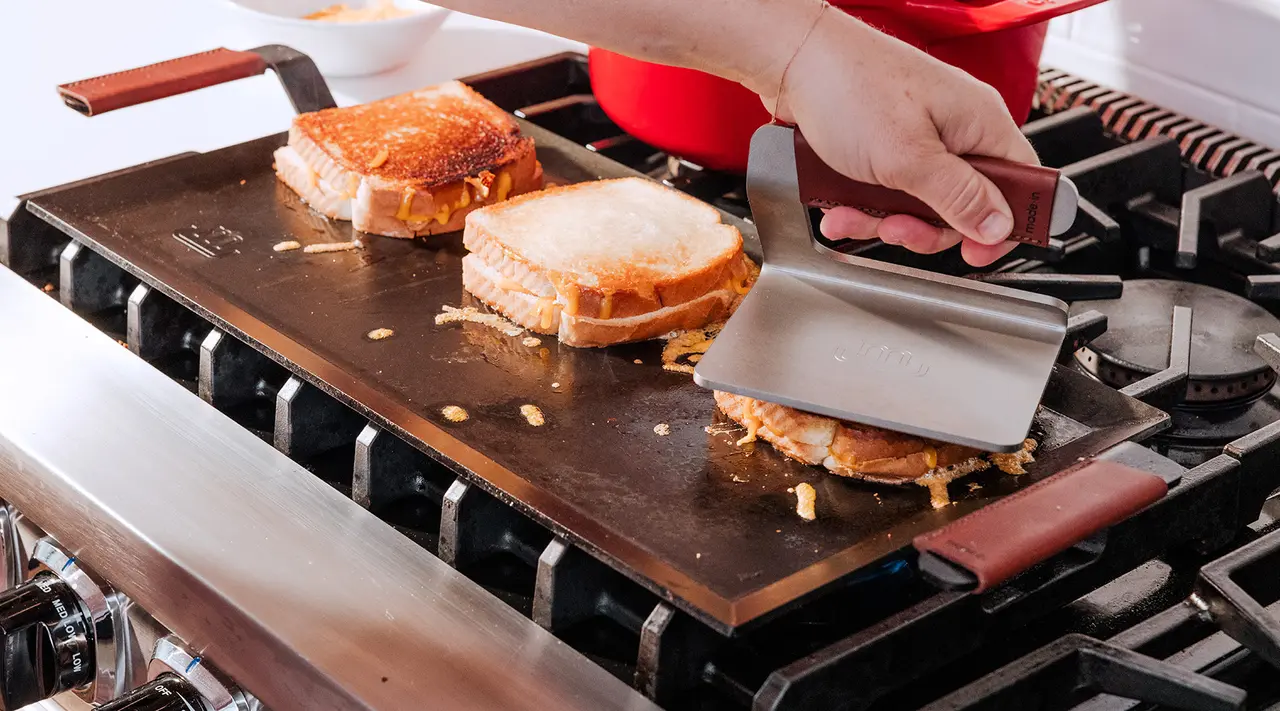
Before you start prepping your smash burger ingredients, here’s how to know if your griddle is a go—once you've ensured it sits flush with your burner(s) of choice.
Material
The main defining factor of induction compatible cookware is whether or not it’s made of ferromagnetic materials. Luckily, most common cookware materials like carbon steel, cast iron, and stainless steel are induction compatible. Even if your griddle contains non-ferromagnetic materials—like copper or aluminum—it can still be used on an induction cooktop if it’s sandwiched by a material like stainless steel or carbon steel.
If you want to be extra certain, however, you can try the “magnet test” by holding a magnet up to the bottom of your griddle. If it sticks to or is repelled by the magnet—any sort of interaction—you’re good to get cooking. If there's no interaction between the magnet and the griddle, then it's not ferromagnetic and not induction-compatible.
You can also look for the induction compatible symbol, which looks like a coil of wire with four loops, or a phrase like “induction compatible” on the packaging or online product page.
Shape and Size
Not every griddle has the right shape for an induction cooktop. This is because some griddles have lips running along the edge that prop the griddle up off the surface of the stove. While this generally isn’t an issue when cooking with a gas stove, which can transfer heat even if there’s a gap between the pan and the flames, it’s a non-starter when it comes to induction—which, as a refresher, needs to sit flush with the cookware to generate heat.
When testing out a griddle for your induction cooktop, check to make sure that it sits flat without any space between the griddle surface and the stove. Note that if you have a double-sided griddle—i.e. one that has both a ridged side and a flat side—the ridges may cause the pan to heat unevenly when facing flat side-up. Also make sure that your griddle isn’t too big or too small for your stove, as this can cause the griddle to heat unevenly.
Ready to Shop?
We’ve always had a soft spot for home griddles, but the fact that this incredibly versatile piece of cookware can also be induction compatible sweetens the deal even more.
If you’re ready to invest in your own restaurant-style flattop, we think you’ll love our Carbon Steel Griddle: quick to heat and super responsive to temperature change, it’s a natural fit for your efficient new induction stove—or any stove or grill, for that matter.
